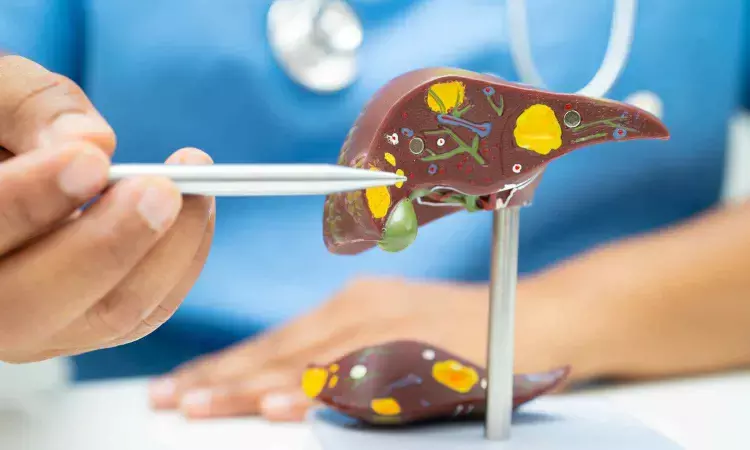- Home
- Medical news & Guidelines
- Anesthesiology
- Cardiology and CTVS
- Critical Care
- Dentistry
- Dermatology
- Diabetes and Endocrinology
- ENT
- Gastroenterology
- Medicine
- Nephrology
- Neurology
- Obstretics-Gynaecology
- Oncology
- Ophthalmology
- Orthopaedics
- Pediatrics-Neonatology
- Psychiatry
- Pulmonology
- Radiology
- Surgery
- Urology
- Laboratory Medicine
- Diet
- Nursing
- Paramedical
- Physiotherapy
- Health news
- Fact Check
- Bone Health Fact Check
- Brain Health Fact Check
- Cancer Related Fact Check
- Child Care Fact Check
- Dental and oral health fact check
- Diabetes and metabolic health fact check
- Diet and Nutrition Fact Check
- Eye and ENT Care Fact Check
- Fitness fact check
- Gut health fact check
- Heart health fact check
- Kidney health fact check
- Medical education fact check
- Men's health fact check
- Respiratory fact check
- Skin and hair care fact check
- Vaccine and Immunization fact check
- Women's health fact check
- AYUSH
- State News
- Andaman and Nicobar Islands
- Andhra Pradesh
- Arunachal Pradesh
- Assam
- Bihar
- Chandigarh
- Chattisgarh
- Dadra and Nagar Haveli
- Daman and Diu
- Delhi
- Goa
- Gujarat
- Haryana
- Himachal Pradesh
- Jammu & Kashmir
- Jharkhand
- Karnataka
- Kerala
- Ladakh
- Lakshadweep
- Madhya Pradesh
- Maharashtra
- Manipur
- Meghalaya
- Mizoram
- Nagaland
- Odisha
- Puducherry
- Punjab
- Rajasthan
- Sikkim
- Tamil Nadu
- Telangana
- Tripura
- Uttar Pradesh
- Uttrakhand
- West Bengal
- Medical Education
- Industry
Increased lactate and decreased pH levels in VBG associated with disease severity in liver disease patients: Study

A new study published in the journal of Cureus showed that venous blood gas (VBG) analysis has shown itself to be a safe and accurate predictive technique for chronic liver disease (CLD) as an alternative to arterial sampling.
The prognosis of patients with chronic liver disease is greatly impacted by systemic consequences like acid-base abnormalities. Traditionally, arterial blood gas (ABG) analysis has been used to track these disruptions, but it has procedural hazards, particularly for patients with coagulopathies, a well-known consequence of CLD.
Thus, this study by Manish Bansal and team assessed the predictive value of venous blood gas characteristics in individuals with chronic liver disease. The goals of this study were to evaluate VBG values in patients with CLD, use the Child-Turcotte-Pugh (CTP) score to correlate these parameters with the severity of the disease, and ascertain how predictive these data were of patient outcomes and death.
From November 2022 to January 2025, 253 individuals with CLD were included in a hospital-based observational cross-sectional research at S. N. Medical College in Agra. Upon admission, VBG parameters were examined, including pH, pCO₂, bicarbonate (HCO₃⁻), base excess, and serum lactate. The CTP score was used to categorize clinical severity, and outcomes such as complications, hospitalization, and death were examined. Using SPSS version 26 (IBM Corp., Armonk, NY, USA), descriptive and inferential statistical techniques were used for data analysis.
The most prevalent cause among participants (47.8%) was alcohol-related liver disease, while 63.24% of participants were male. VBG values varied significantly between CTP classes; CTP Class C had higher lactate (4.9±1.7 mmol/L) and lower pH (7.21±0.09) and bicarbonate (16.3±4.1 mmol/L) (p<0.001).
Lactate levels and CTP scores showed strong associations (r=0.82, p<0.001). The strongest independent predictor of death was elevated lactate (>4.5 mmol/L) (adjusted HR=7.1). Increased lactate and deteriorating CTP class were associated with significantly worse 30-day survival rates, according to Kaplan-Meier analysis (p<0.001).
Overall, in patients with CLD, VBG parameters (high lactate and lowered pH) offer vital prognostic information and have a substantial correlation with the severity and mortality of the disease. VBG analysis provides a safer, more dependable, and more useful substitute for arterial blood gas analysis in ordinary clinical practice, improving risk classification and treatment of hospitalized CLD patients.
Source:
Bansal, M. K., Mishra, V., Singhal, R., Sharma, M., Prakash, C., & Rawat, S. (2025). Venous blood gas (VBG) analysis is as safe and equally reliable as arterial blood gas (ABG) analysis in the determination of prognosis in chronic liver disease patients: A study conducted in a tertiary care hospital in Uttar pradesh, India. Cureus, 17(6). https://doi.org/10.7759/cureus.86977
Neuroscience Masters graduate
Jacinthlyn Sylvia, a Neuroscience Master's graduate from Chennai has worked extensively in deciphering the neurobiology of cognition and motor control in aging. She also has spread-out exposure to Neurosurgery from her Bachelor’s. She is currently involved in active Neuro-Oncology research. She is an upcoming neuroscientist with a fiery passion for writing. Her news cover at Medical Dialogues feature recent discoveries and updates from the healthcare and biomedical research fields. She can be reached at editorial@medicaldialogues.in
Dr Kamal Kant Kohli-MBBS, DTCD- a chest specialist with more than 30 years of practice and a flair for writing clinical articles, Dr Kamal Kant Kohli joined Medical Dialogues as a Chief Editor of Medical News. Besides writing articles, as an editor, he proofreads and verifies all the medical content published on Medical Dialogues including those coming from journals, studies,medical conferences,guidelines etc. Email: drkohli@medicaldialogues.in. Contact no. 011-43720751


